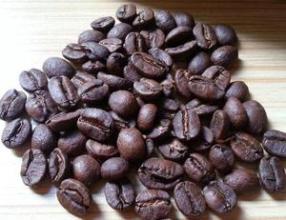Jasmine fragrant coffee bean flavor description treatment quality characteristics of taste manor introduction
Jasmine fragrant coffee bean flavor description treatment quality characteristics of taste manor introduction
Coffee fruit contains two seeds, namely coffee beans. The two beans are connected face to face with each other on one side of the plane. Each coffee bean has a thin outer film, which is called silver skin, and its outer layer is covered with a yellow outer skin, called endocarp. The whole coffee bean is wrapped in a sticky pulp to form a soft and sweet pulp with an outer shell at the beginning of the 20th century when overseas Chinese brought coffee back from Malaysia to grow in Hainan Province. Later, tropical and subtropical provinces in the south began to grow plant coffee one after another. Although the cultivation time is short, the coffee from Hainan and Yunnan provinces in China has excellent quality and unique charm, so it enjoys a high reputation in the world. After some foreign businessmen buy it at a low price, it is processed and sold to the international market. It has become an expensive world-class drink, especially the small-grain coffee grown in Yunnan Province. Because of the large temperature difference between day and night in Yunnan, it is conducive to the accumulation of substances in it. So it tastes strong but not bitter, fragrant but not strong, oily and fruity, so it is praised by coffee merchants at home and abroad as "the best coffee tree in the world is a shrub or small tree of Rubiaceae." Leaves opposite, leathery, long oval; every March, the branches will appear white flowers, petals spirally arranged, the heart of the flowers jump around the petals, take a closer look, it is really like a small windmill playing in childhood, emitting the fragrance of jasmine flowers; the fruit is oval, berries, crimson, containing two seeds, that is, we are familiar with coffee beans. The first flowering period of the white flower red fruit coffee tree is about three years old. the five-petal tube-shaped white flowers are filled with a faint fragrance of jasmine and the inflorescences are arranged in dense clusters.
Flowers wither after two or three days of blooming and begin to bear fruit after a few months. The fruit is a drupe with a diameter of about 1.5cm. It turns green at first, then turns yellow gradually, turns red when ripe, and is very similar to cherry, so it is called cherry coffee (Coffee Cherry). It can be harvested at this time.
Based on these characteristics, the promised land suitable for Arabica coffee is mostly located in countries with alpine terrain between the Tropic of Cancer, which is also known as the coffee belt (Coffee Zone/Coffee belt).
As an elegant, fashionable and high-grade beverage, coffee has long been popular all over the world, and it has been listed as the first of the three major beverages (coffee, tea and cocoa) in the world. Coffee has been planted in 76 countries and regions all over the world. In 1983-1984 alone, the world's coffee output reached as much as 5.5 million tons, with an export volume of 4.2 million tons, of which Brazil in South America, known as the "coffee kingdom", produced and exported the most. In spite of this, the hometown of coffee is not in Brazil, but in Ethiopia in Africa. To this day, there is still a large area of wild coffee forest in the dense jungle of the southwestern province of Cafa. The word "coffee" comes from the place name "Kafa".

Important Notice :
前街咖啡 FrontStreet Coffee has moved to new addredd:
FrontStreet Coffee Address: 315,Donghua East Road,GuangZhou
Tel:020 38364473
- Prev

Coffee fine grinding scale thickness difference how to adjust the coffee machine
Coffee fine grinding scale thickness difference coffee machine how to adjust the reason is very simple, fine grinding coffee powder surface area is larger, extract more ingredients, the more ingredients soluble in water, the more liquid, the more bitter. On the contrary, the rough ground coffee powder has a small surface area and less extracted powder. of course, the concentration will be lower and the bitterness will be weaker. The bitter taste is weak, and the sour taste is replaced by it.
- Next

The influence of the altitude of coffee beans introduction to the quality of graded coffee flavor description treatment
The influence of the altitude of coffee beans the coffee beans planted in high altitude areas are hard, dense and have the potential to give full play to their special flavor. The really amazing coffees are grown between 4000 and 6000 feet above sea level, and these beans are picked carefully only during the mature season. Central American coffee is rated according to the altitude at which it grows, such as SHB (Strictly Ha)
Related
- Guji coffee producing area of Guji, Ethiopia: Humbela, Shakiso, Wulaga
- What is the most expensive variety of Qiloso in BOP multi-variety group?
- How to store the coffee beans bought home?
- Why are Yemeni coffee beans so rare now?
- Ethiopian Sidamo all Red Fruit Sun Sun Santa Vini Coffee beans
- SOE is mostly sour? What does it mean? Is it a single bean? what's the difference between it and Italian blending?
- Is Italian coffee beans suitable for making hand-brewed coffee?
- How to choose coffee beans when making cold coffee? What kind of coffee beans are suitable for making cold coffee?
- Just entered the pit to make coffee, what kind of coffee beans should be chosen?
- Can only Japan buy real Blue Mountain Coffee? What are authentic Jamaican Blue Mountain coffee beans?

